Working our way through Morocco
A few cities, on our way to volunteering in the Desert
The Ferry
After a long few weeks of working our way through Italy and France and then slowly working our way down through Spain (with a quick pitstop in Lisbon), Jordan and I finally landed at our last European destination: Algeciras. A small Spanish town with strong arabic influences.
After we arrived, we did a practice run of the walk down to the ferry docks, which we’d need to navigate early the next morning. Then we headed to a Moroccan restaurant to get a taste of the cuisine before we arrived. This was actually the first time I ever tried kefta and egg tagine. It arrived at the table still sizzling—and from that moment, I knew I was going to love Moroccan food.
The architecture in the town was striking. It reminded me of European old towns, but also a bit like the old British beach towns. Jordan and I sat down for almost an hour while I tried to watercolor one of the buildings that really spoke to me. I still haven’t finished it (over two months later), but I have the reference picture, so maybe one day.
The next morning, we arrived at the ferry docks at a (still dark) 7:30am for our 10:15am ferry, and Jordan had his first experience with African time. We got an email from the ferry company saying boarding closed at 8:15am, and another telling us to arrive 30 minutes earlier since we didn’t have our tickets printed yet. So we did. 7:30 before the sun came up, we were at the ferry docks, got our tickets printed, then I wanted to go to the cafe. I think I was making Jordan anxious, because I lingered in the cafe until 8:05am.
After hearing no news thus far, we headed up to the desk where our bags would be scanned and our tickets checked at 8:20, after the alleged final boarding. We showed our tickets, and the ticket scanners just said, “Not yet.” When we asked when boarding would start, they shrugged and said, “I don’t know.”
After seemingly forever waiting, they finally called our ferry at 9:40, and we began to board. After that, it was smooth sailing. We went out on the deck, where you could easily see both Morocco and Spain at the same time. Our passports were stamped and customs completed on the ferry, so by the time we arrived, we could just walk from the port to our airbnb.
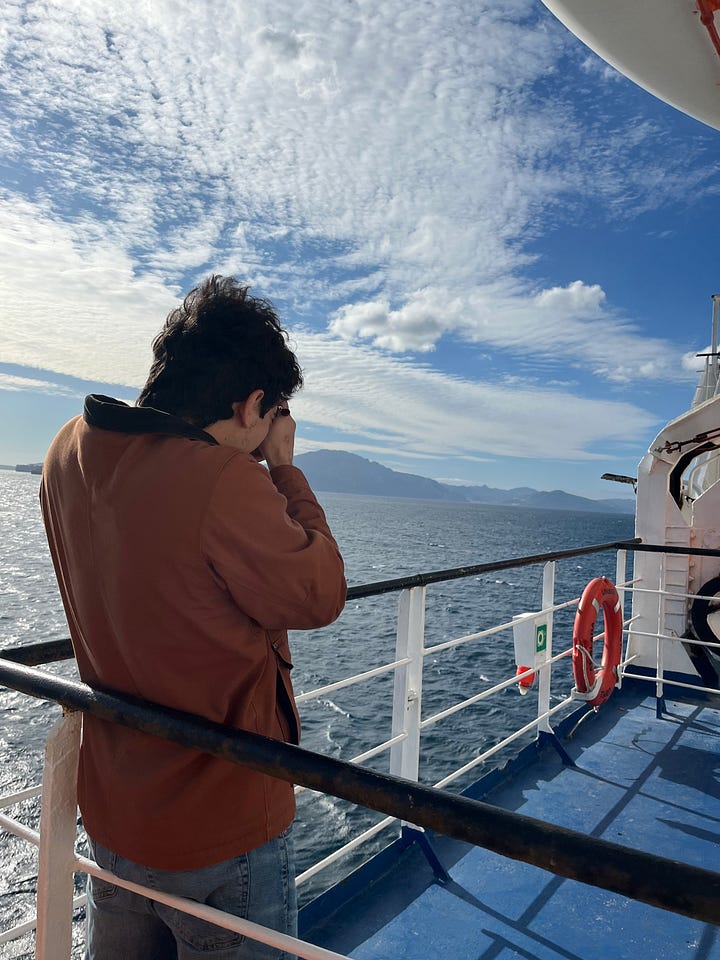
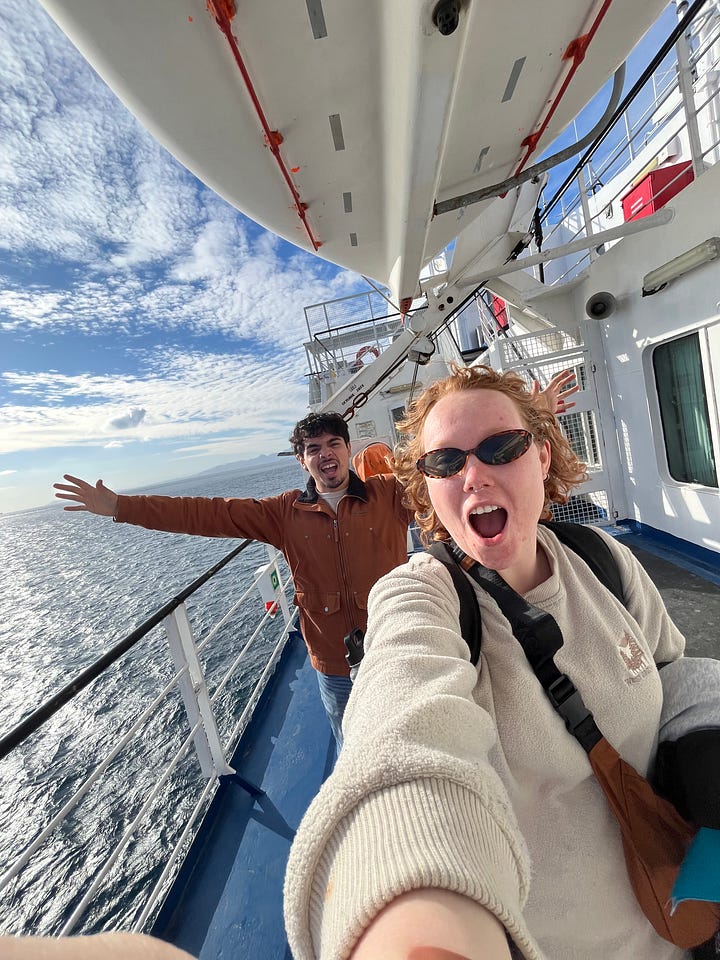
Or so we thought.
We booked the ferry to the wrong port, not the port that is actually inside the city of Tangier, but the port that is an hour long cab ride away. After a little drama (my SIM card not working, and us needing to withdraw some cash for the taxi ride), we finally made it to Tangier.
Tangier
The first thing we did in Tangier, after lying down for 20 minutes, was to go get Jordan and I SIM cards and cash. Physical SIMs are so cheap here; I don’t know why anyone would do anything else. Jordan and I bought the most expensive option, Maroc Telecom, because its coverage is the best across the country. It was necessary since we’d be traveling a lot. I got 7GB for five euros (still extremely cheap). It includes texts and calls, and every month when I top up my data, it’s still just five euros. Amazing. You can fill it up at most bodegas, too.
We only had one full day in Tangier, so we did our best to see as much as we could. One of the main things we wanted to do was visit the Medina and the Souk, so that Jordan could practice his haggling skills. We took a nice walk around the souk, and got pulled into a rug shop, where we were sat down and shown so many different rugs, and Jordan was dressed in a Jellaba.
Tangier has a long history that makes the city what it is today. It started with the Phoenicians as early as 10 BCE, and since then, the city has been ruled and influenced by many cultures. During the colonial period of Morocco, the city was an international zone managed by colonial powers that attracted diplomats, spies, writers, and businessmen from Europe and America. Not much is left from that early Phoenician occupation, except for this series of tombs cut into the rock face.
We visited the famous Café Hafa, which offers fantastic views of the Strait of Gibraltar, and Spain in the distance. The café is known for its amazing mint tea (which Jordan and I can attest to), but maybe more so for its famous past patrons, including the rolling stones, the Beatles and more!
Despite only being there for a day, we managed to walk a lot of the city. We even made our way to a local restaurant that had a menu only in arabic, no French. Here we had the first of many Moroccan lentils. The lentils here are so good, the goal is to make someone teach me the recipe before I leave. I’ve always been known to love lentils, but the lentils here really changed the game for me, now I could eat them all day.
Chefchaouen
Chefchaouen, the Blue City. One of the most stunning and photogenic places I have ever visited. Sadly I had a cold while I was there, so I didn’t feel up to looking nice, but I would agree with people who say that it is the most instagrammable place in Morocco.
Surprisingly when we were here, it rained a few times, but the rain didn’t bother me too much, it was the cold. Obviously the houses in Morocco are made for the heat, made to keep the warmth out and the cold in. The traditional houses anyways also don't have any heating or cooling, which I am usually okay with but it was SO cold at night, made especially bad since I was already feeling sick to begin with.
Im really glad that we came to Chefchaouen in February, when it is not so full of tourists. We felt like we were some of the only people walking the blue streets. Plus, since there were not so many people, it felt like we didn’t really get pressed hard to buy stuff from the street vendors, but we did enjoy looking at all of the stuff they sold, and I did even haggle my way into a pair of linen pants!
There is a short hike to the Spanish mosque, also called Bouzafer Mosque, in Chefchaouen, that is very popular at sunset, not only because you can see all of the blue buildings from this vantage point, but because the golden light washes the city in a very pretty light. Hearing the prayer call while the last of the light disappeared from this view was a very beautiful experience. The hike is very easy to find, and is even on google maps!
Fes
After a long bus ride out of Chefchaouen, we finally made it to Fes. Compared to Chefchaouen, Fes was incredibly busy. The medina was packed with open shops and people constantly trying to usher us out of the streets and into their stalls. One moment you’re having a nice, casual conversation with someone, and the next they’re showing you the entire inventory of their shop.
After spending a day in the Medina, buying a few things and getting tired of the constant attention, we wandered outside the old city in a quieter, more local area. It was such a relief to experience some slowness after the chaos. Even though the food in the tourist are
as was incredibly cheap to what we were used to in Europe and the states, this local area took it to a whole other level — like 70 cents for a sandwich. Despite Google’s warnings about hygiene, we went for it. No regrets, and no consequences. The sandwiches were delicious.
Fes is famous for its leather goods, so while we were there, we headed to a leather shop to find Jordan a new camera bag. We ended up buying something for what we thought was a pretty good price. But lag we realized maybe we’d paid more than we should’ve, since they sent us off with a few other leather goodies. Nonetheless, the bag was a necessary purchase, which we were incredibly happy with, and the wallet that Jordan got as a freebie, has become a staple.
One of the highlights of Fes was actually our airbnb host. He’s a German expat, who’s been living in Fes for the past fifteen years, and before that he spent ten years in India. Needless to say, he had great advice and stories to share with us. While we were staying with him, he actually bought a cave house in a local village to convert into another Airbnb property. We can’t wait to come back one day and stay there.
Marrakesh
Marrakesh was like Fes, incredibly busy, even more busy than Fes. There is a kind of safety in the amount of people there though, it made you feel sort of invisible like you’re in the middle of a school of fish. There weren’t nearly as many people trying to drag you into their shops, which was a bit of relief. That said, the haggle culture here is very real. Jordan got really into it, thanks to a book that he was reading Never Split the Difference, and was glad for the practice.
Just near the riad we stayed at in Marrakesh, there was the main square in the Medina, called Jemaa El-Fna. This square is basically the epicenter of chaos in Marrakesh. The closer you are to it, the more chaotic it gets; the farther you stray, the calmer it becomes. You can find everything here: food, spices, fresh herbs, knock-off shoes and clothes, fresh juice, monkeys and turtles in cages, and "snake charmers."
The reason I put "snake charmers" in quotes is because they’re not really charming the snakes. They play music while smacking the ground next to the snakes with large boxes. Basically, they’re just irritating them into flaring their necks. Jordan actually got caught by one of these “charmers.” Before he could even say “no thanks,” he had a small snake around his neck and was being dragged over to meet the cobras.
At night in the square, the whole place transforms. Gone is the animal cruelty replaced by circles of people gathered around musicians playing drums and stringed instruments by firelight. The atmosphere is contagious, but also a little overwhelming if you’re not in the mood for high energy.
Some other things we did in Marrakesh: we visited the Menara Gardens and spent time by the massive reflection pool in the middle. We rode the local bus—twice. We ate a camel burger (yep). Visited the Bahia Palace, though half of it was closed for renovations while we were there. Bought a bus ticket from the local bus station.
The bus station was an experience. We would have just taken the CTM bus to the desert, but that bus got there too late in the evening, so we wanted to see if there was a bus that could get us there easier. You can’t buy tickets for the local buses online, so we went to the station in hopes of securing a seat. We had to wait twenty minutes to go inside because the station was being cleaned. We found the stall which sold the bus ticket we wanted, and we would get to the desert at 5pm! Perfect! We paid for our ticket in cash and then received a hand written paper ticket. We thought it was a little bit suspicious, but hoped for the best when we arrived at the bus with our bags the next morning.
Onto the Desert
We left early in the morning to the coach bus station and made it on our bus. We managed to sleep a lot of the ride. One cool thing that Jordan and I noted about the local buses is that they act as a kind of postal service. ne cool thing Jordan and I noticed is that the local buses here kind of act like a postal service. The bus would stop occasionally for someone to add or remove a package from the luggage hold. It definitely made the trip longer than expected, though. We took the local bus because it was supposed to arrive in M’hamid at 5pm, but it only arrived at 9:30pm. Nonetheless, we arrived and had an incredible time. [Read about our experience in the desert here]

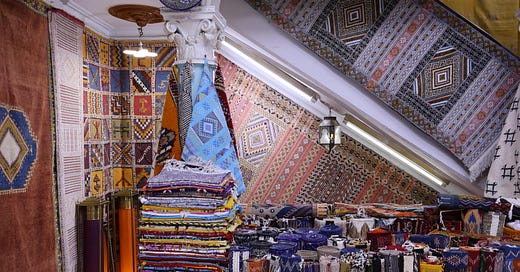








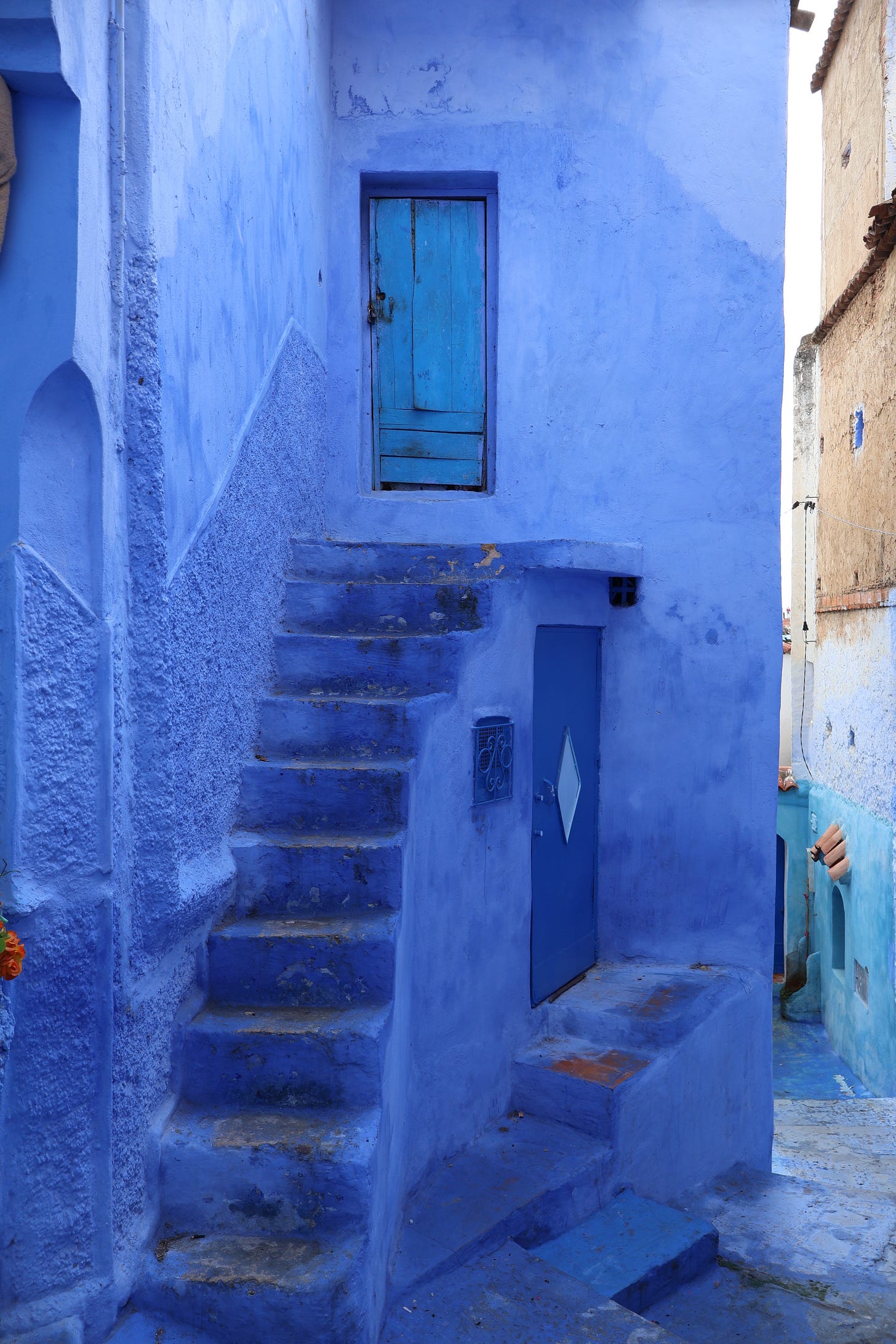
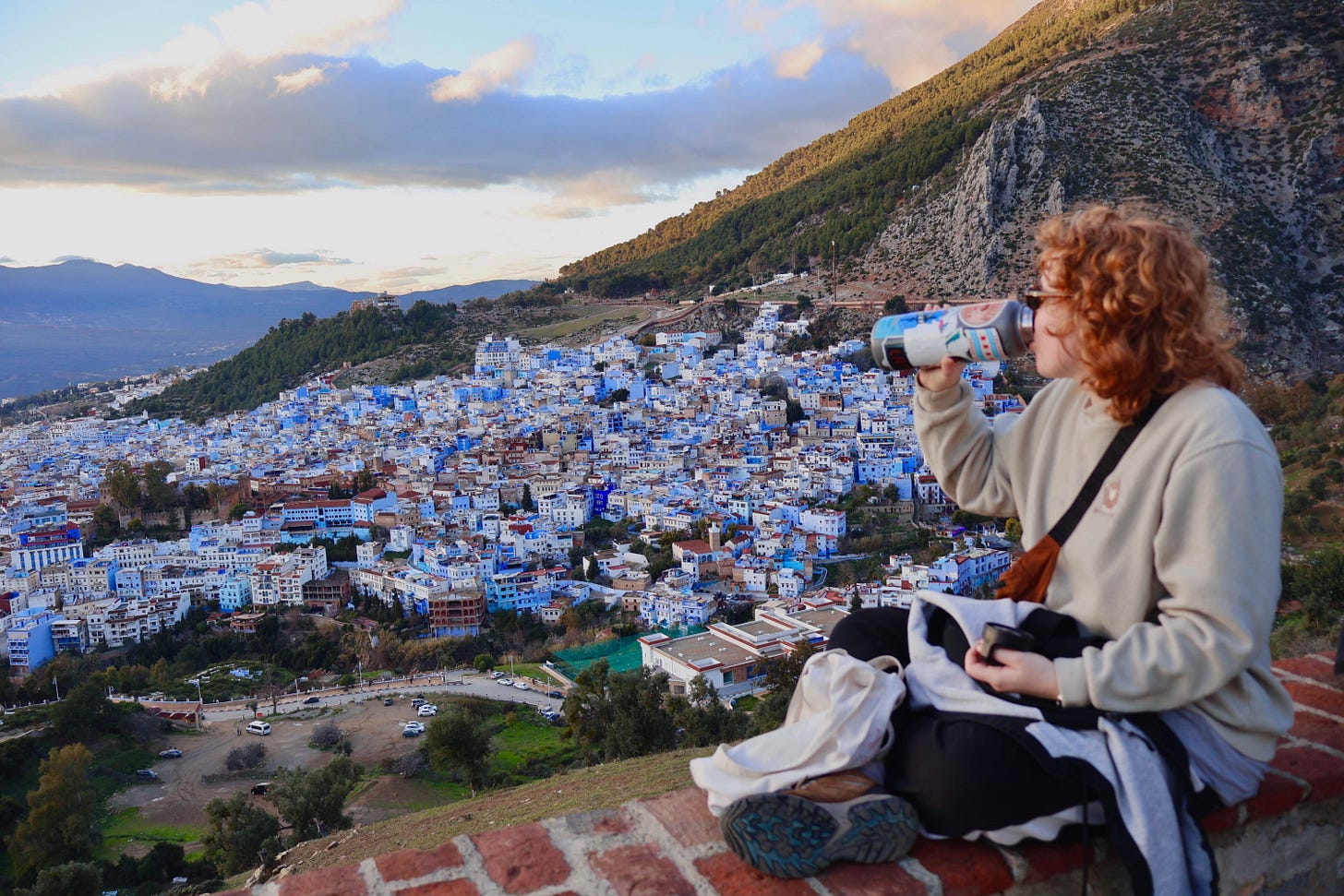

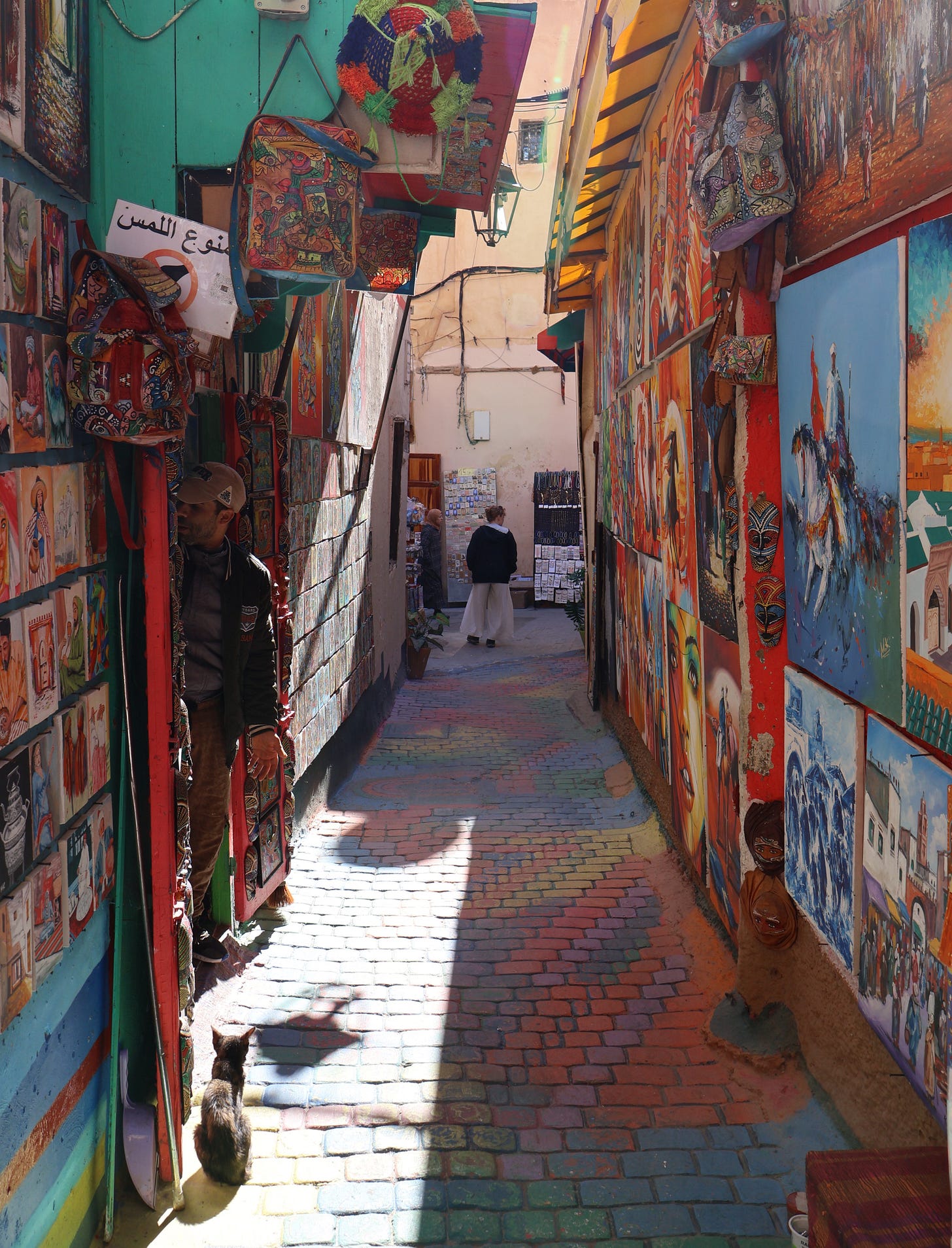




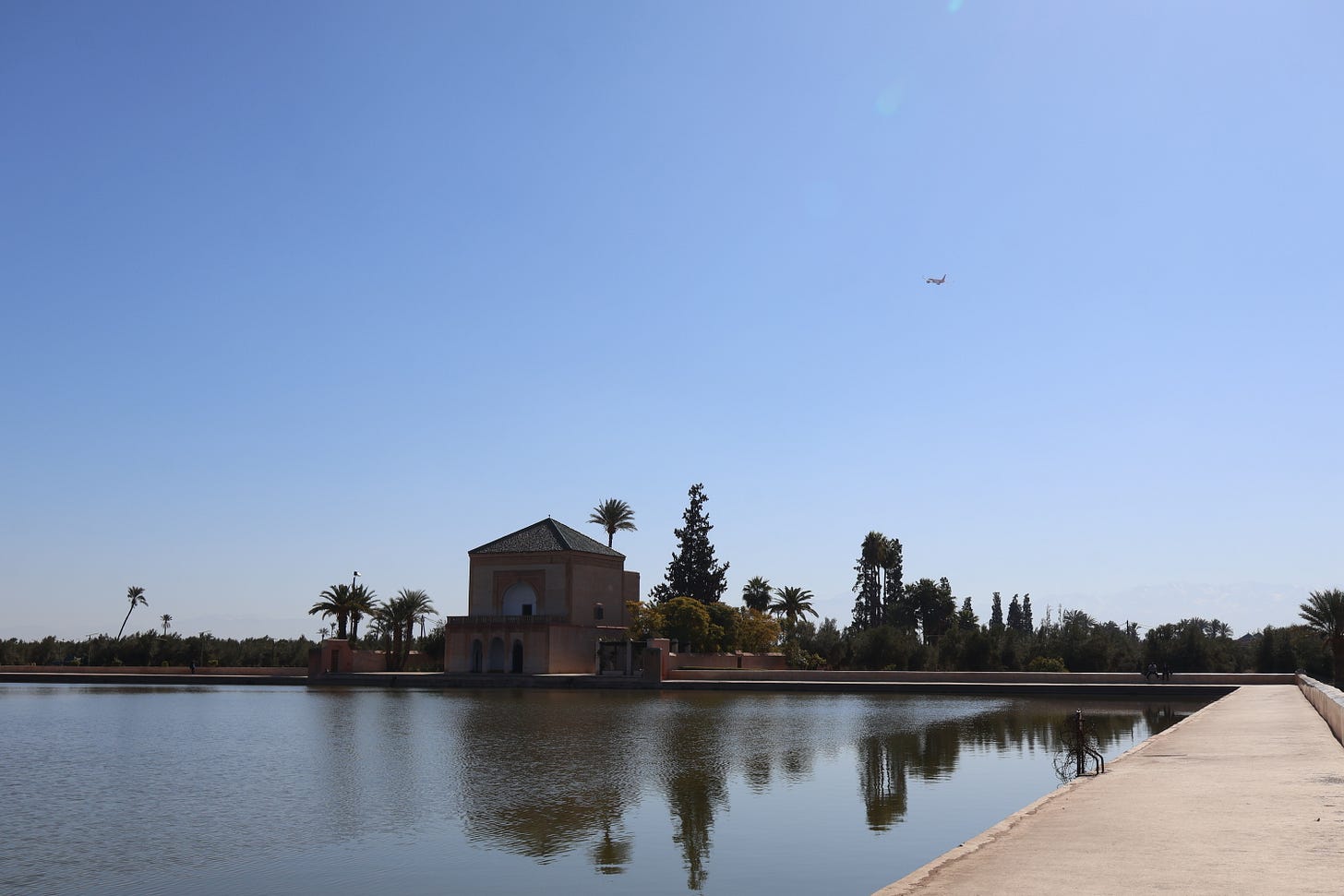

Loved reading about your Moroccan adventures! I've never heard of the "Blue City" - it's so beautiful!
The adventures continue!! Sending love xx